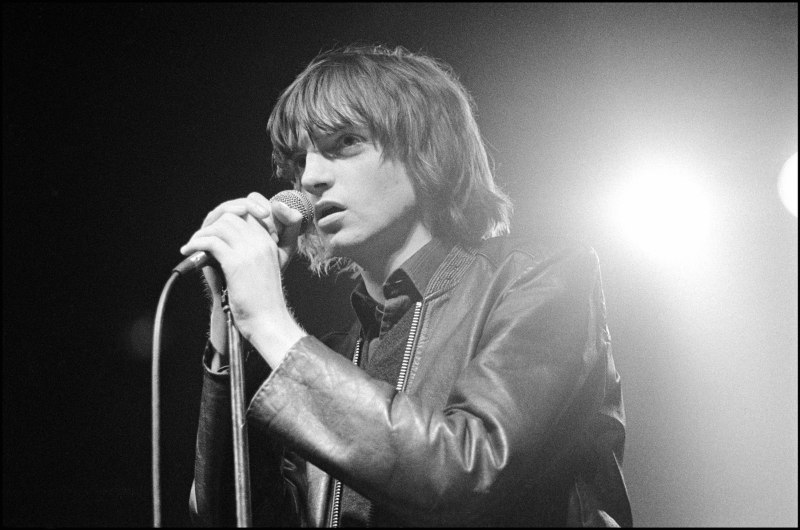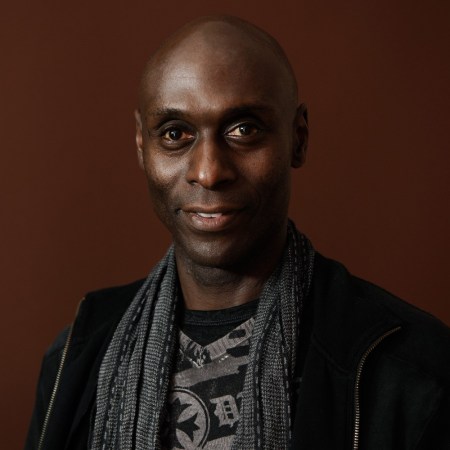Merely being an individual is an act of defiance, an artful act.
Art is a weapon. A song is a weapon. Even (especially?) the idea of band — this movable, musical gang — is a weapon, but only when it’s used to oppose conformity. Art, or a song, or a band, offers you the opportunity to speak your mind with courage and originality, even when it may be safer or more lucrative to do otherwise.
To hear Mark E. Smith and the Fall at their best (and even at their not-so-best) was to hear the great weapon of individuality, firing.
Mark E. Smith died on January 24, at age 60. For the last forty years, he had been the leader of the Fall, a band from Manchester, England. The Fall was a remarkable ensemble of constantly shifting players who made churning, frantic, whacking noisebilly, the sound of tension, disappointment, and dark times in dying, damp cities. The belly of rock’n’roll lived inside of Smith and the Fall, who turned the feral, Hadacol spirits of Memphis and New Orleans and Dusseldorf and Manchester into amphetamine poetry.
I say, without hesitation, that Mark E. Smith was one of the few authentic geniuses rock’n’roll has ever produced. Like Patti Smith and Dylan, he took the rage of an era and the bitten-off skin of the heart, turned it into prose, and set it to a beat. Smith used the story of the 20th century, askew and broken and bruised by war and progress, as a map for his lyrics, and he used human tension and chemical self-assault as a fuel for his art.
There are outrageous stories of Smith’s behavior, of his abuse of bandmates and his own body, of the real-world realization of the contrarian, literate, frustrated homunculus at the center of his spirit. But these anecdotes must be entirely secondary to his monumental and original words and music, the way he turned an era’s desperation into spitting, hiccupping, hissing, barking poetry, and then drove his band to turn that poetry into inexact, fiery rock’n’roll.
From first to last (regardless of who was in the band), the music of the Fall remained instantly identifiable: It was a thumping barrel of needles and accusations, a bag of wires, howls, ire and brains that seemed birthed, in equal parts, from Captain Beefheart, Krautrock, the Monks, Johnny Burnette and the Rock’n’Roll Trio, and some fever-speed dream of Corso or Ferlinghetti. It was widely imitated – most notably by Pavement and LCD Sound System, and later, Sleaford Mods and the Idles – but always by people who might understand how it was played, but not why it was played.
Fall music seemed to take in the whole 20th century: It was the sound of long lines in smoggy cities and loud arguments in moldy pubs; it was the sound of anger at right-wing ignorance and left-wing smugness, frustration with doctors and sports scores; it was the sound of the world after Eden, the world of uneven asphalt and poorly made goods. It was the gruesome (and sometimes exquisite) rhythmic excreta of a century of poetry, science fiction, tabloid headlines, and drugs by the handful. In some ways, I think Smith is best compared to artists like Otto Dix, Käthe Kollwitz, Philip K. Dick, and Hunter S. Thompson.
And the sound! Imagine the early Sun Artists (tic-tocking, gnashing and panting Cash, Elvis, Perkins and Orbison) playing jazz and raging at the industrial world; yes, that’s exactly what it was. It’s the music Johnny Cash might have made if he had decided to be Sun Ra, and Sun Ra had been listening to a lot of Can.
At the heart of all this was the words, compelling words full of oddity and decay. Other lyricists tell truths, small and large, and touch us, amuse us, or distract us; Smith was a brilliant, rageful, confounding and mean poet, often referencing only his full and furied mind. To encounter the astounding mysteries of Smith’s lyrics is to enter an alternative history of rock’n’roll because it is like finding another Dylan; and in so very many ways, the howling bard of the North of England and the mumbling accuser from the North Country have so very, very much in common. Mark E Smith is not “Dylan-esque” because he imitates Dylan (there is none of that); he is Dylan-esque because of the fiery, flaring, pointed, careening (but deeply deliberate) nest of words that came out of his pen. Check out an early-ish Smith piece called “The NWRA” – short for The North Will Rise Again – which is a masterpiece, yes it is, and you’ll see exactly what I’m talking about.

(It’s tempting to quote lyrics here, but I’d rather direct you to an endlessly entertaining website called The Annotated Fall — which, with humor and detail, attempts to decode and footnote Mark E. Smith’s hundreds of songs.)
But you, friend, want to know where to start. This is an exceedingly difficult question, considering Mark E. Smith and the Fall released (take a deep breath) 31 studio albums, 32 authorized live releases, and 5 combo studio/live albums. If you’re keeping score at home, that’s 68 records over 39 years, not counting official compilation albums — there are 34 of those. Very, very few of those releases are dismissible; you can dip into literally any album, at any stage, and find something of value, something that draws you in aesthetically and conceptually.
But let’s get pragmatic. Where to start?
Try A Part of America Therein 1981, Totale’s Turns, Grotesque, Hex Induction Hour, Live In San Francisco, Re-Mit, Sub-Lingual Tablet, and/or the compilation albums 50,000 Fall Fans Can’t Be Wrong and A Past Gone Mad (the latter provides an interesting picture of how the Fall retained their textual and conceptual weirdness even as they adapted their music to more contemporary modes). Now, if I had to reduce that, I’d go with A Part of America Therein 1981, Grotesque, and the “Fiery Jack” 45. These show the brutal, backwards/forwards industrial poetry of the Fall at their early peak as they bridge the eras of ‘50s rockabilly primitivism, ‘60s garage d’art, and Can/Beefheart progressive Adderall autobahn blues. These records also display the Fall’s mega-significant role in laying the foundation for the noise/grunge era.
There is an extraordinary moment towards the very end of 1980’s “Fiery Jack” when, in the role of a bitter, middle-aged right-wing blowhard sustained by cheap liquor and speed, Smith seems to lose himself in his character (as he so often did), and he becomes locked in a repetitive rage. While barking/hissing a strange mantra through his teeth – “eat this grenade, eat this grenade” – he whacks his lip – or maybe it’s his forehead, or his chin – against the microphone. It’s such a real moment, clearly unplanned; and there is an authenticity in that one crunch, in that loop of rage, that is everything punk rock aspired to, but never could quite reach. That one moment is more real than anything the Clash or the Sex Pistols or certainly Green Day ever recorded. It is the sound of an idea, a character, fighting to rise above the mere art form into something bigger, something that can’t be controlled by the frame of a song.
Mark E. Smith expanded this moment of spontaneity and arresting, gasping genius into an entire career. Punk rock should have said: We own our own minds. Mark E. Smith always said: We own our own minds. Art can always say: We own our own minds.
This article was featured in the InsideHook newsletter. Sign up now.






















